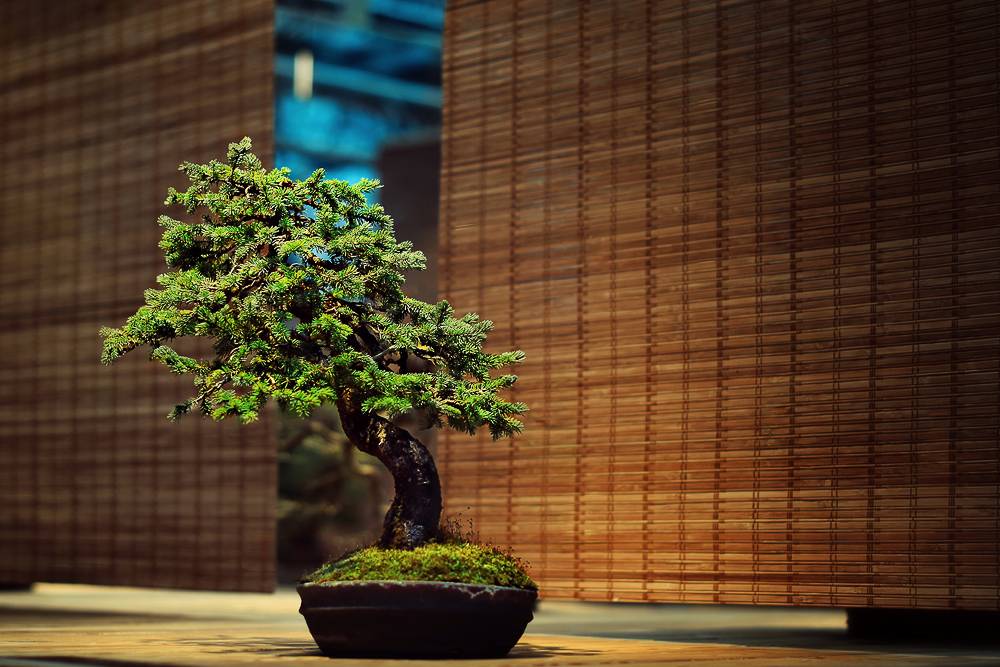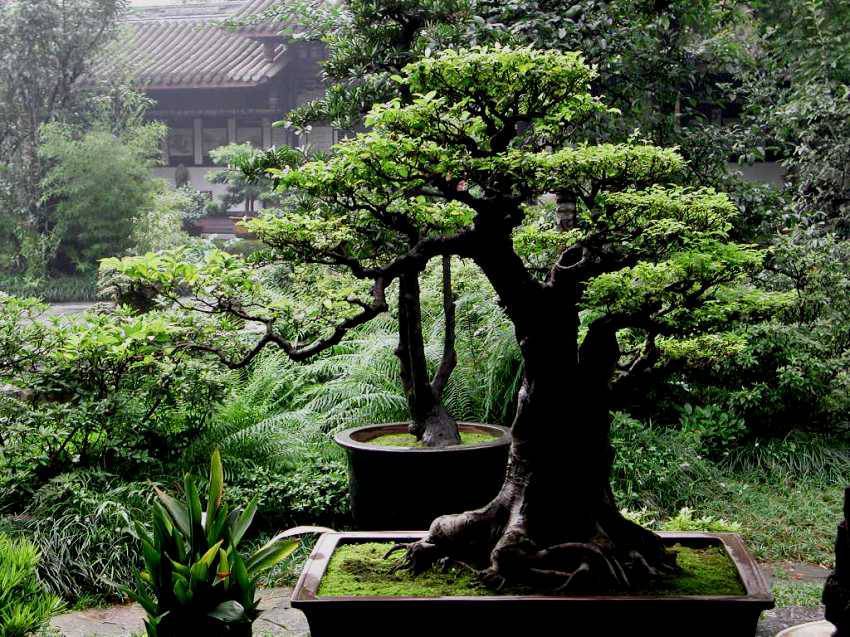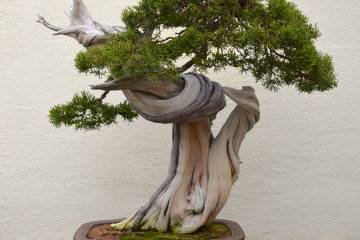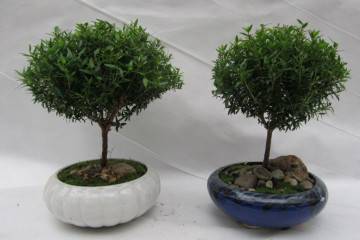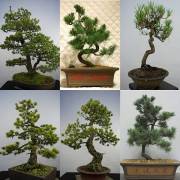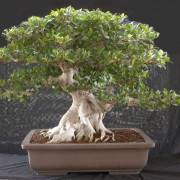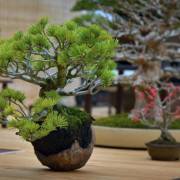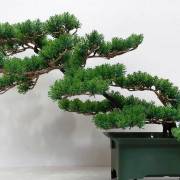Bonsai - DIY home care
Content:
China and Japan, as carriers of culture, are increasingly spreading their influence on the everyday life and life of an ordinary person. And today, one of their traditional elements is inherently considered the ancient art of bonsai. It has spread throughout the world due to its ability to gently and elegantly decorate every home.
Today bonsai can be found in a tea shop or tastefully furnished apartment. Despite the popularity of the trend, the rules for caring for a miniature garden play a key role here, on which the well-being of the plant and its appearance depend. Therefore, many are wondering how to grow and care for bonsai properly.
Bonsai: Home Care for Beginners
Caring for a bonsai tree at home consists of several stages.
Bonsai crown formation
Crowning is a crucial step towards caring for a bonsai, because the shape of the crown is an integral element of the plant. This process allows you to support the branches in the right direction and does not allow the crown to thicken.
How to form a bonsai crown? You need to start this in the fall. The first step is pruning diseased and malformed branches and upright shoots that affect the tree's appearance.
In summer, it is also important to work on maintaining the shape of the crown. This is done by pinching - a procedure for thinning dense sections of the crown located at the ends of the shoots. When trimming the crown, it is not recommended to use rigid tools, for example, scissors; it is better to use wire for deflecting and bending branches or tongs.
Pot selection
A bonsai pot is not just a decorative element, but also an important tool for proper plant care. The miniature tree is grown in shallow pots that can hold a small amount of soil. In this case, the pot itself can be wide to hold the tree in place, and its shallow depth will help control and limit the rapid growth of plant roots.
Soil selection
Soil for bonsai is also an important element of plant care, so you need to be careful and careful when choosing it.
The purpose of soil selection is to retain moisture for a long period of time, since it evaporates quickly enough due to its small volume. In specialized stores, you can find special soil for bonsai, and you can also create your own mixture of the necessary soil and fertilizers. The ideal substrate is a mixture of three types of soil: black peat, coarse sand and coniferous soil (humus of needles, the source can be juniper or thuja).
Care rules
The key to the health of a mini-tree is care in accordance with all the rules and regulations for plants of this type.
The correct place for placement is the sunny part of the room. If there is no such side in the house, additional lighting is needed.
The temperature regime is a more difficult nuance when caring for a tree, since the variety of the plant greatly affects this. For example, when purchasing Benjamin's ficus, it is important to know that the standard temperature for it is 18-20 ° C, for other plant species - up to 25 ° C.
It is not necessary to water the tree as often. It is necessary to act according to the following scheme: daily watering in the summer, when the moisture dries out faster, and once a week in the winter. The ground should always be moist, but an excess of moisture is prohibited.
Fertilization of the soil plays an important role. All the necessary tools can be purchased in specialized stores. The choice can be given to both mineral and organic fertilizing. Everyone chooses which species is more suitable for his plant.
Root system care
Control over the state of the root system is of great importance. The presence of excess moisture in the pot is unacceptable, this leads to rotting of the roots. It is also necessary to remember about aeration - saturation of the earth with oxygen.
Transfer
It is necessary to replant young plants every year when the roots are abundantly filling the pot. It is necessary to start replanting every 3-5 years when the tree becomes more than 3-4 years old. There is a need for an urgent transplant if the roots rot or outgrow the volume of the occupied flowerpot.
The best time for another transplant is early spring. During the process, you need to prune unhealthy roots.
The step-by-step transplant is as follows:
- The end of watering 2-3 days before transplanting, which will allow the soil to dry out a little and simplify the work.
- The transplant bonsai pallet or planter is cleaned and disinfected.
- The drainage hole is closed with special tools such as mesh.
- The soil is being prepared.
- Holding the tree by the trunk, you need to get the plant out of the pot along with a lump of earth.
- Further, the soil is partially removed, but no more than a third.
- It is necessary to cut off diseased and dry roots, and shorten the rest.
- Now the bonsai needs to be transplanted into a new pot, its roots need to be carefully straightened out.
- If necessary, you can make a special wire stand or put a weighty stone to support the tree.
- Fill up the earth, lightly tamp the soil.
- Watering the plants according to the standard scheme.
- Installing a new transplanted plant in a familiar place with sufficient access to sunlight and a comfortable temperature regime.
Bonsai diseases and pests
Unfortunately, bonsai have their own diseases and pests that interfere with growth and development. A flower grower definitely needs to know not only the signs of ailments, but also how to deal with negative consequences.
Yellow leaves
The most common ailment among mini-trees manifests itself as yellowing of the leaves, and then their fall.
There is no definite answer on how to deal with this phenomenon, but, as a rule, the causes of the disease are improper care: little or much moisture; unsuitable temperature regime or the use of excessively cold water; stress - emergency transplant without following the rules; deficiency of essential substances in the soil. All this can be easily eliminated if you follow the advice above.
Aphid
Aphids suck the juices out of the plant. It can be green, white or black. Methods of struggle, as with all pests: it is necessary to get rid of insects, larvae and eggs manually, purchase the necessary insecticide, and process the plant. Next, you need to monitor the condition of the tree and prophylactically repeat the actions for treating insects until it is completely cured.
Fleecy aphid
A special kind of aphid is also often found on bonsai leaves, usually on larch and pine trees. These parasites are like round little balls of cotton wool.
The algorithm for combating fleecy aphids is similar to that for conventional aphids.
Shield
A cunning insect, not immediately distinguishable among branches and leaves.It looks like a growth on the tree bark. Mechanical cleaning, spraying with special compounds will also save. It is also important to inspect the plant periodically to stay ahead of the increase in the insect population.
Bark beetle
The most insidious type of insect pests, since it is very difficult to detect it with the naked eye, because it hides in the bark of an adult plant. Pest signs are small holes in the trunk and dark spots. To fight insects, you need to use any insecticide that contains copper.
Mealy growth
The causative agent of the disease is a fungus that infects the plant in case of excessive moisture. The first signs are leaves twisted into a tube, white bloom on the branches, foliage falling and discoloration, dots along the entire crown of the tree. Indoor bonsai are most often attacked by fungus.
It is necessary to deal with powdery mildew in two stages: physical cleaning of leaves exposed to the harmful effects of the fungus, and also treating the plant with a fungicide. It is important to prevent the agent from entering the soil.
Despite the fact that many people acquire a bonsai flower for decorative purposes, some do not know how to care for it: shape the crown, water it, and what top dressing should be applied. In fact, growing a mini-tree will not be a hassle, you just need to arm yourself with this article and always monitor the condition of the plant.
